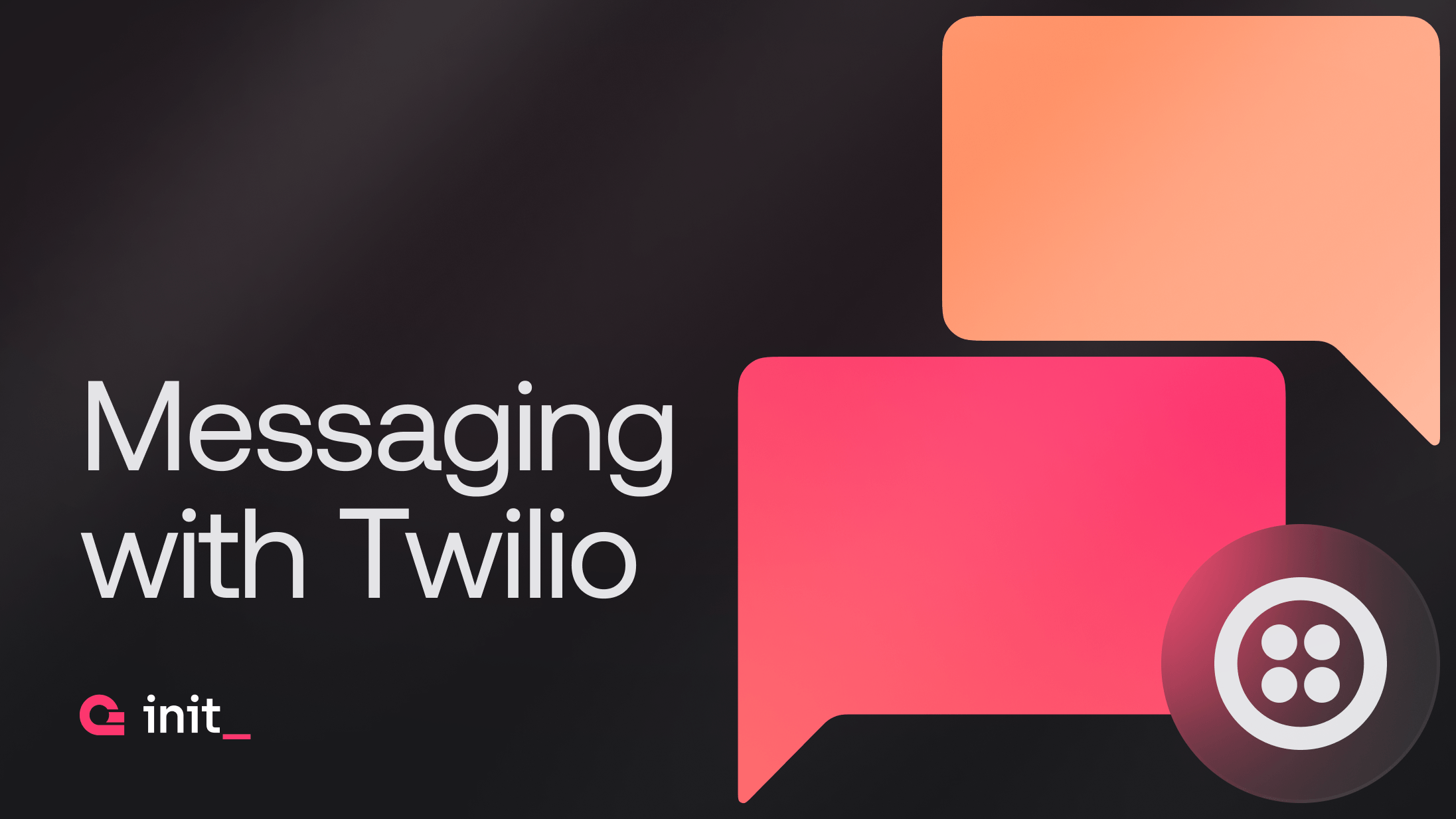Every day, we receive multiple messages from different web and mobile applications, whether OTPs for transactions or promotional messages. If you're a developer, you might have even developed one yourself. If you haven't already guessed, this blog post focuses on messaging - explaining what it is, the tools you can utilize to build a messaging system, and more.
What is Messaging?
Messaging refers to sending messages directly to a user's mobile device from an app or website, even when the user is not actively using the application. It is a powerful tool for engagement, providing timely information, reminders, alerts, or updates.
It can be used for various reasons, including:
Transactional messages: These messages relate to the user's actions or account, such as payment confirmation.
Promotional messages: These marketing messages promote products, services, or offers.
Reminder messages: These remind users about events, tasks, or actions they must take.
Location-based messages: These are triggered by the user's location.
Challenges faced when building a messaging system
While messaging is a standard feature, it can be a complex task involving various technical and design challenges. Developers often encounter issues related to scalability, reliability, and cross-platform compatibility.
In terms of scalability, some common challenges faced are:
Handling high volume: Messaging apps can experience sudden spikes in usage, requiring quick infrastructure scaling without performance degradation.
Data management: Efficiently storing, retrieving, and managing large volumes of messages is a significant challenge, especially with growing user bases.
User connections: Maintaining concurrent user connections and ensuring real-time message delivery without delays.
Diverse platforms: Ensuring consistent functionality across various iOS, Android, and web platforms.
How Twilio can simplify implementation
Twilio is a cloud communications platform that offers a wide range of services, including SMS, voice, video, and email. It's known for its flexibility, scalability, and ease of integration into various applications. Twilio also provides a robust push notification service, part of its broader suite of communication tools.
Here are some of the benefits of using Twilio:
Multi-channel support: Twilio provides a single platform to handle different types of messaging, including SMS, MMS, email, and push notifications. This unified approach means developers can manage various communication channels through one interface.
Cross-platform messaging: Twilio supports push notifications for both iOS and Android platforms, simplifying the process of creating cross-platform compatible messages.
Cloud infrastructure: Being a cloud-based service, Twilio scales automatically to handle varying loads, which is crucial for applications that may experience sudden spikes in user activity.
High availability: Twilio's robust infrastructure ensures high availability and reliable message delivery, reducing concerns about downtime or message loss.
Personalization and segmentation: Twilio allows for the customization and personalization of messages, enabling targeted communication strategies.
Scheduling and automation: Developers can schedule notifications and automate messaging based on user actions or predefined conditions.
Delivery reports: Twilio provides feedback on message delivery status, which is crucial for understanding and improving the effectiveness of notifications.
Real-time analytics: Access to real-time analytics helps monitor the performance of messaging campaigns.
One of Twilio’s products that lets developers implement messaging across various channels such as SMS, MMS, and WhatsApp is Programmable Messaging.
Twilio Programmable Messaging
Twilio Programmable Messaging allows you to send alerts, notifications, promotions, and marketing messages to your customers' preferred channels using a single API.
Since the offering leverages a RESTful API, it is compatible with various programming languages and frameworks. It utilizes webhooks for real-time notifications of message delivery status and inbound messages. Security features like HTTPS and API keys ensure secure message transmission. Additionally, the Messaging API automatically queues messages when sending high volumes or when rate limits are reached.
Here's an overview of the Twilio Programmable Messaging:
Multiple messaging services: Supports SMS, MMS, and chat services, allowing developers to send and receive messages across different platforms.
Scalable infrastructure: The API is backed by Twilio's robust cloud infrastructure, ensuring high availability and scalability to handle large volumes of messages.
Messaging insights: Allows you to analyze your application's messaging, identify and debug issues, optimize delivery, and find areas to boost engagement with your end users.
Content template builder: This lets you create and send rich messaging content over any Twilio-supported messaging channel.
Link shortening: Allows you to send messages with shortened links using your company-branded domain and track clicks.
Message scheduling: This lets you schedule SMS, MMS, and WhatsApp messages to be sent at a fixed time in the future.
Using Twilio with Appwrite Messaging
As a part of our latest release, Appwrite 1.5, we have launched a new product, Messaging, that helps developers implement communication services within their applications. As a part of the SMS offering within Messaging, we have added an adapter to integrate Twilio Programmable Messaging with Appwrite. Once you have access to your account SID, auth token, and phone number from Twilio, you will be able to send messages to your users with just a few lines of code.
const sdk = require('node-appwrite');
// Init SDK
const client = new sdk.Client();
const messaging = new sdk.Messaging(client);
client
.setEndpoint('https://cloud.appwrite.io/v1') // Your API Endpoint
.setProject('<PROJECT_ID>') // Your project ID
.setKey('919c2d18fb5d4...a2ae413da83346ad2') // Your secret API key
;
const promise = await messaging.updateTwilioProvider(
'[PROVIDER_ID]', // providerId
'[NAME]', // name (optional)
false, // enabled (optional)
'[ACCOUNT_SID]', // accountSid (optional)
'[AUTH_TOKEN]', // authToken (optional)
'[FROM]' // from (optional)
);
Resources
Visit our documentation to learn more about Messaging, join us on Discord to be part of the discussion, view our blog and YouTube channel, or visit our GitHub repository to see our open-source code.



